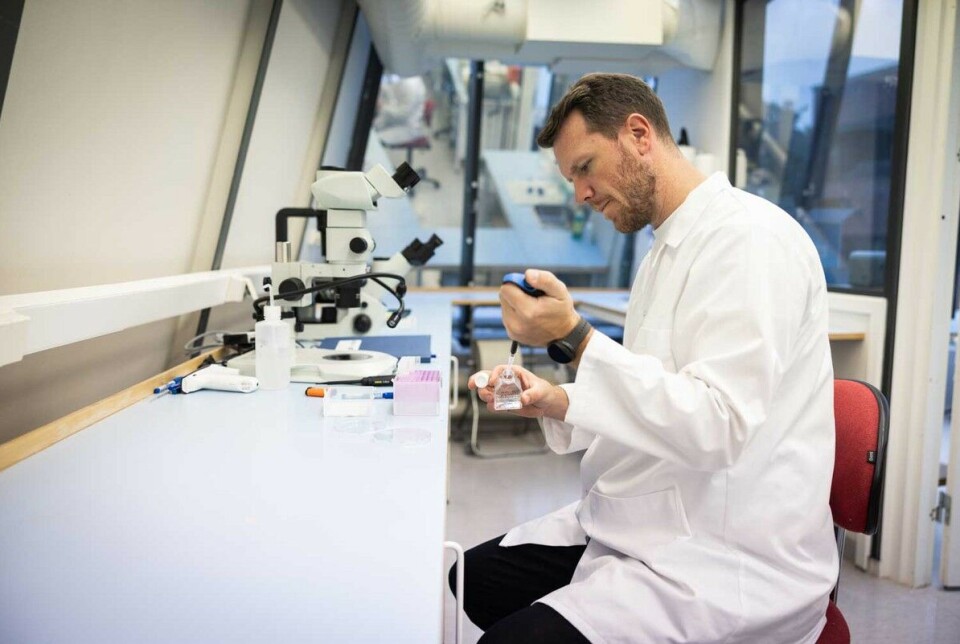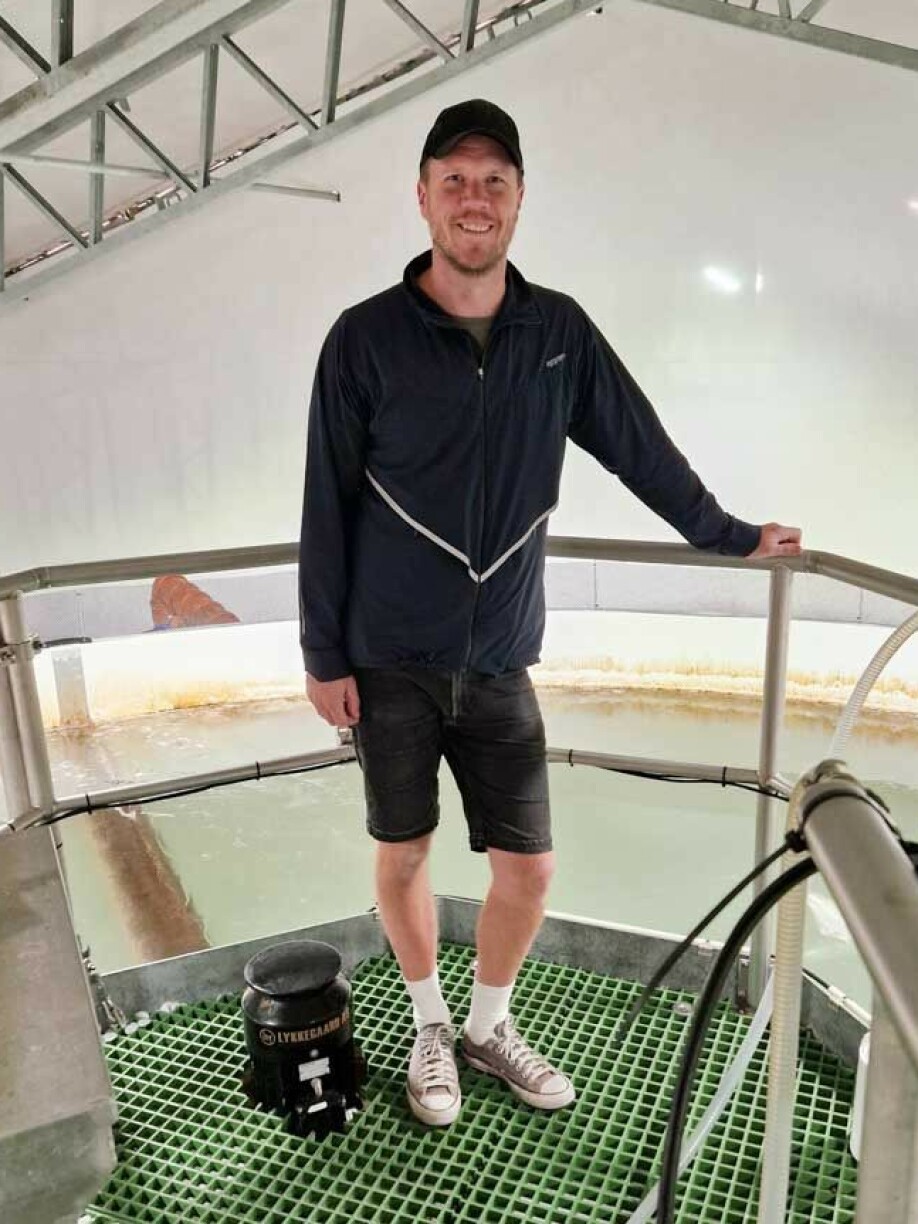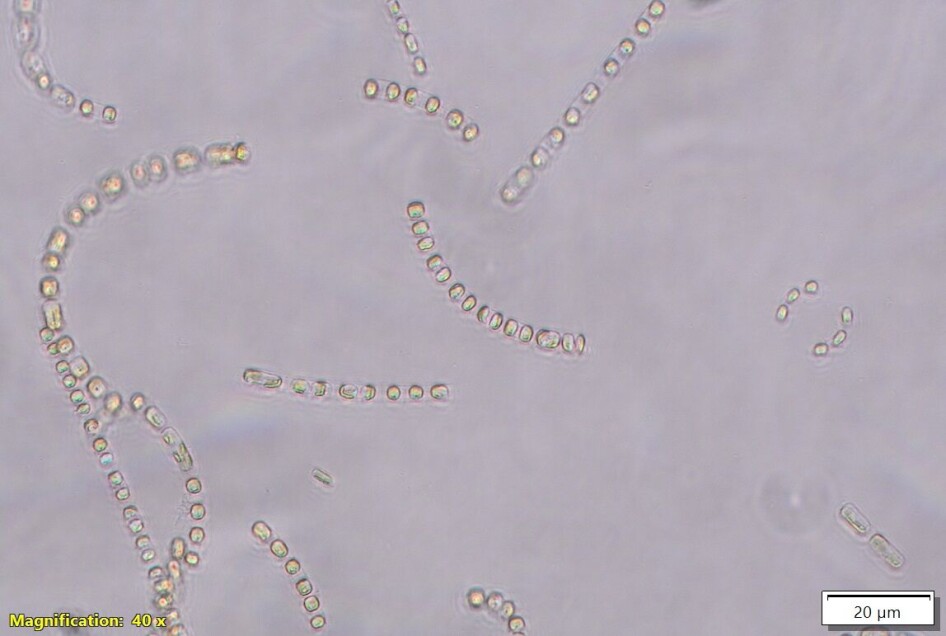THIS ARTICLE/PRESS RELEASE IS PAID FOR AND PRESENTED BY THE University of Agder - read more

Researcher grows ingredients for fish feed in wastewater
Stian Borg-Stoveland uses nutrients found in wastewater from fish farms south in Norway to grow microalgae.
“The fish farming industry needs more sustainable and environmentally friendly food sources for its salmon. Microalgae have a favourable composition of nutrients and can be a good ingredient for fish feed,” Stian Borg-Stoveland says.
He is a PhD research fellow at the University of Agder's (UiA’s) Department of Natural Sciences and is affiliated with the Centre for Coastal Research (CCR) at UiA. He is also employed at Ecofishcircle AS in Farsund.
More sustainable feed
In his doctoral research, Borg-Stoveland works to find sustainable solutions for the production of fish feed.
Farmed salmon in Norway are mainly fed on imported soy products and fishmeal which is neither natural nor sustainable in the long run.
“Fishmeal has an unstable price due to the variable catch of fish used. As a replacement, farmed salmon get soy products since they are cheaper. We need to become more self-sufficient in the food we give our farmed salmon,” he says.

Test facility in Lyngdal
In May, Ecofishcircle AS started operating a demo tank at Hausvik outside Lyngdal containing 4,000 smolt. The smolt weighs about 160 grams and will grow to about 4 kilos.
The plant uses a so-called recirculating aquaculture system (RAS) where the water is cleaned and sent back into the system. Around 95 per cent of the water is reused, while 5 per cent is replaced.
“The wastewater is full of nutrient salts such as nitrogen and phosphorus. Some of these nutrients come from fish faeces,” Borg-Stoveland says.
Borg-Stoveland plans to use the wastewater from the demo tank to grow microalgae. Microalgae are photosynthetic microorganisms that hold a great potential as a source of nutrients for use in food and fodder production.
Algae have a high nutrient content and there can be great variation between the species.
Wastewater affects coastal areas
Wastewater from fish farming and other industries is currently released directly to coastal waters. This leads to a number of challenges to organisms that live along our coast.
It can, for example, lead to excessive fertilisation and the growth of unwanted algae in waterbodies in the farming area.
“The unwanted algae strangle the normal distribution of seaweed and kelp and floats like a blanket on the surface of the water and blocks the light,” Borg-Stoveland says.
Another consequence could be abnormally high bacterial activity on the seabed near wastewater outfalls.
Wastewater contains large amounts of organic matter which comes from fish faeces and uneaten feed, among other things. In coastal waters, this is broken down by bacteria using oxygen in the process. Areas of water with low oxygen levels impede the natural growth of plants and animals. The low oxygen levels in the Oslofjord have had major consequences for life in the fjord (link in Norwegian).
“Wastewater should be used for something more sustainable to ensure we take better care of our coastal environment,” Borg-Stoveland says.

Double gain
Growing microalgae from wastewater will be a double gain, according to Borg-Stoveland.
“Not only is the water cleaned of potentially harmful nutrient salts before it is released to the coastal waters, but research so far also shows that the microalgae produced can be used as an ingredient in fish feed. Which means that the food is locally sourced, and we get more reuse of unused resources,” he says.
Microalgae have a favourable composition of nutrients that are suitable for fodder. They contain important Omega-3 fatty acids that imported soy products do not contain.
The nutrient composition of the algae can also be ‘designed’ by controlling the supply of light, temperature and nutrients during cultivation.
Reducing carbon footprint
Ecofishcircle AS finances large parts of Borg-Stoveland's research work.
In the test facility in Lyngdal, they are developing sustainable land-based aquaculture for the future. The aim is to significantly reduce carbon emissions from fish farming on land. One way to do this is to capture CO2 and convert it into feed ingredients and protein that can replace imported soy products.
The company views all emissions as resources gone astray.
“In this project with UiA and Borg-Stoveland, we will utilise the waste materials and use them as nutrients in the production of fish feed,” Jarle Dragvik, CEO of Ecofishcircle AS, says.

This article/press release is paid for and presented by the University of Agder
This content is created by the University of Agder's communication staff, who use this platform to communicate science and share results from research with the public. The University of Agder is one of more than 80 owners of ScienceNorway.no. Read more here.
See more content from the University of Agder:
-
Research paved the way for better maths courses for multicultural student teachers
-
The law protects the students. What about the teachers?
-
This researcher has helped more economics students pass their maths exams
-
There are many cases of fathers and sons both reaching elite level in football. Why is that?
-
How we used plants to protect ourselves from evil
-
What is it like for nurses to promote health behind bars?




































